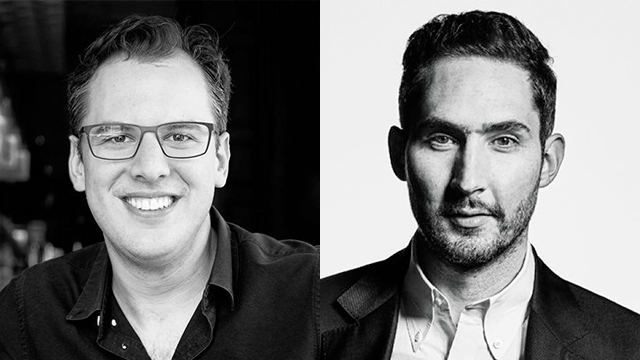Anticipation Awaits Instagram Co-Founders' Next Moves
What does the future hold for Kevin Systrom and Mike Krieger?
Six years after the billion-dollar sale of Instagram to Facebook, and a few months after the service hit a billion users, Instagram co-founders Kevin Systrom and Mike Krieger left the company last September. The statement released on their departure said they were “ready for [their] next chapter.” Not long after that, Systrom said, “I figure I have a few more Instagrams, timewise, in me,” during a live interview at a Wired magazine event. This was a tantalizing statement, made more so by the pair’s decision to appear together at SXSW for a joint conversation with TechCrunch editor-at-large Josh Constine.
Systrom and Krieger have said that they have been taking time off to unplug with their families and other interests during this post-Instagram period. They have plenty of things to do: Systrom has been a DJ, passed a sommelier exam and taken flying lessons. Since the departure, he has also made several public speaking appearances at industry and media events.
Krieger and his wife, Kaitlyn, founded the Future Justice Fund, a progressive grant-making organization with a focus on criminal justice reform and projects that explore a universal basic income. The couple are also avid art collectors who have been profiled in The New York Times. Both Systrom and Krieger also have young children.
They won’t be on break forever, and the pressing question for industry observers — and no small amount of the general public, considering that Instagram is the runaway leader in popular song mentions for social media — will be what the pair will be up to next. The reason for that anticipation is not just Instagram’s success as a company, but the way it achieved it, and the ways in which it differs from other networks. Those differences might provide signs of the pair’s next steps.
Instagram’s origin story combines pivoting, serendipity and astute reading of user habits. Systrom had been working on his location check-in app Burbn, and had brought his fellow Stanford grad Krieger on board, when he realized that users were mostly engaging with Burbn’s photo-sharing aspect. His then-girlfriend, now wife, Nicole, said she wished she could make her photos look better, and the filters that would be the app’s early signature were born.



